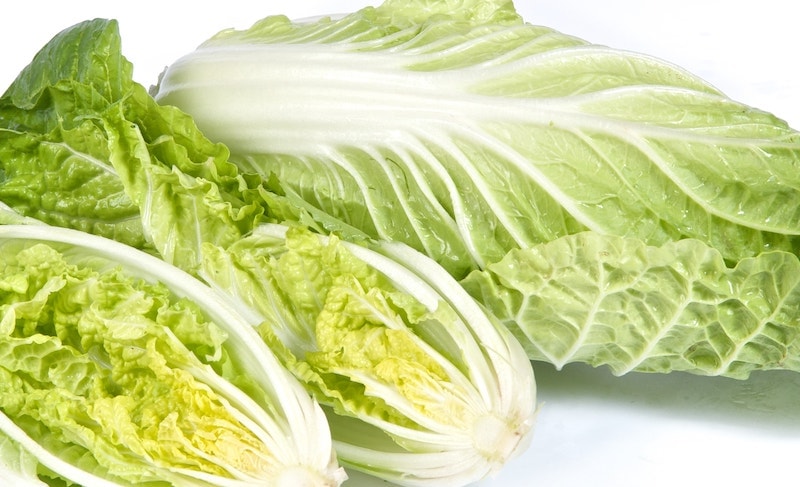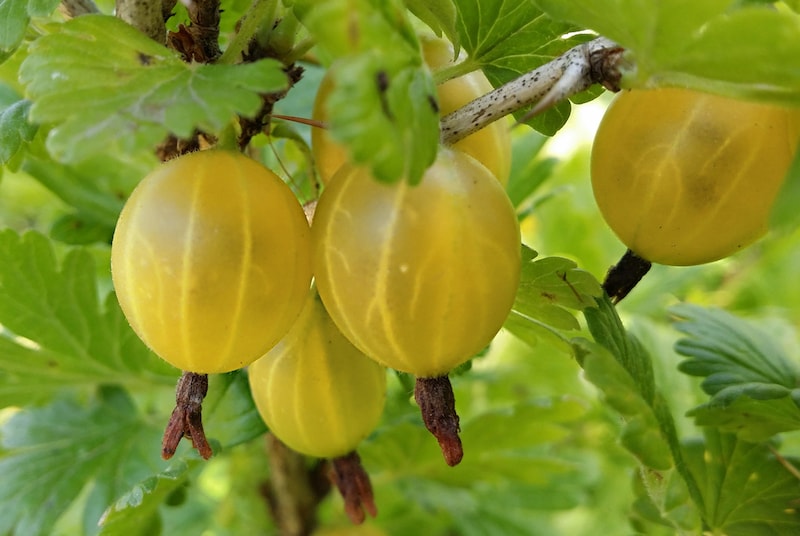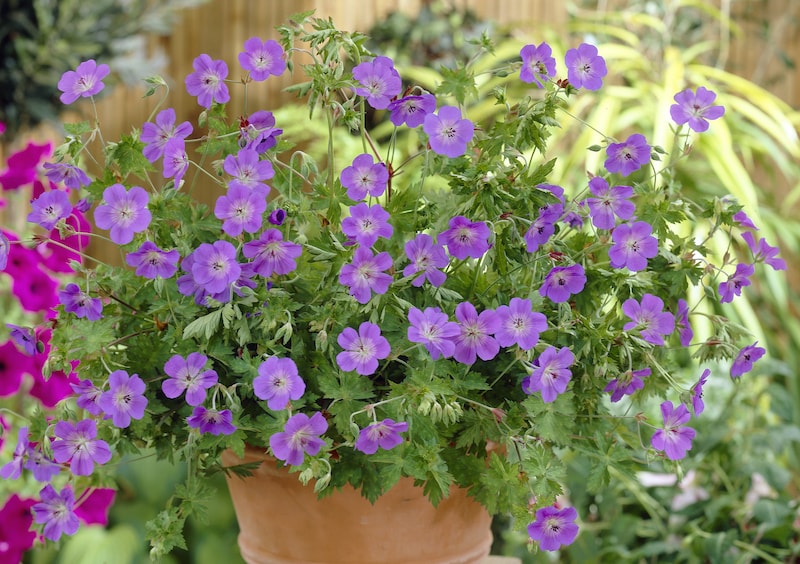Even if you have a shady garden, you can still create a beautiful and productive outside space. If that’s your goal, take a look at these articles, videos and Instagram posts to help you find plants that positively thrive in shade. Whether you want to grow low-maintenance shrubs, pretty flowers, or fruit and veg, get the most from your shady nooks and crannies with tips from these expert gardening bloggers.
When you’re ready to start planting, take a look at our carefully selected plants for shade.
Contents:
- Best advice on plants and shrubs for shade
- Best advice on flowers for shade
- Best advice on vegetables for shade
- Best advice on fruit for shade
Best advice on plants and shrubs for shade

Image: Aucuba japonica ‘Crotonifolia’ from Suttons
Join Lee Burkhill of Garden Ninja as he tackles his garden ‘dead zone’ – an area that’s windy, dry, and shaded. He says it would be tempting to cover it with dry bark and leave it but, instead, he’s got lots growing there. Beginning with an unlikely choice – Thalictrum ‘Black Stockings’, Lee says these normally moisture-loving plants are thriving: “I’ve been growing Thalictrum in the driest part of my shadiest border and it’s been putting on an amazing show now for 2 years.”
Alchemilla mollis is a good choice for general shady areas, says Carol Bartlett at The Sunday Gardener. She writes that, although it does have a tendency to self-seed, its “tiny flowers make a frothy lime green shade tolerant plant which combines well with many garden plants, especially alliums.” If you’re looking for spring flowers for a shaded border, Carol also recommends primulas – head over to her post for lots more excellent shade-loving plant suggestions.
For an A-Z of plants suitable for growing in part shade, our team of horticulturalists here at Suttons provides just that. Beginning with the delightful Ageratum (which hails from shaded areas of Central America) and ending with British violets, this compendium of shade-tolerant plants draws from all corners of the globe. For unusual and inspiring suggestions, this list is definitely worth a look.
If you’re wondering how to create a hedge in a shady area, Barny Davidson at The Jolly Gardener is on hand with some excellent suggestions. His first choice is yew, which “will do equally well in full shade to full sun,” making it ideal for a hedge that spans different light levels. Other recommendations include pyracantha, Portuguese laurel and Euonymus japonicus ‘Green Rocket’. Dreaming of a woodland-style planting scheme filled with lush ferns? Be sure to also check out Barny’s post on reliable evergreen ferns for dry shade.
Best advice on flowers for shade

Copyright: Floramedia
“My shady border is probably better for longer than anywhere else in the garden. Although I do far less work in it than I do in the sunnier borders,” says Alexandra Campbell of The Middle-Sized Garden. Head over to Alexandra’s blog where, just for starters, she offers “Lamium, hydrangeas, tiarellas, astilbe, Japanese anemone (esp Honorine Jobert), skimmia, cyclamen, Alchemilla mollis, Acanthus mollis, hardy geraniums, ferns, hellebores, persicaria, eupatorium…” If you have a shady corner that’s in need of colour, this article is a must.
If you’re container gardening in the shade, head over to Pyracantha where John Moore offers some excellent planting ideas. Among them, John recommends astilbes which, with their clusters of mauve flowers nestled atop ferny fronds, he says, “grow well in shaded areas and will attract plenty of butterflies to your garden.” Also making John’s Top 10 shade-loving plants for containers are hostas, fuchsias and more.
For a shaded woodland area, Katharine Woods at The Tea Break Gardener says Anemone nemorosa – wood anemone – is a delightful flower, but beware of expecting too much too soon because it does take a long time to establish. Also making Katharine’s list of spring plants for a woodland garden is the lovely Trillium.
Best advice on vegetables for shade

Image: Chinese Cabbage seeds ‘F1 Natsuki’ from Suttons
Over at his eponymous YouTube channel, Huw Richards offers his pick of fruit and vegetables to grow in the shade to increase productivity. In terms of shade tolerance, he says that Swiss chard, kale and all other leafy greens are excellent veg for growing with less direct sunlight. At the other end of the spectrum, squashes require the most sun so are best avoided. Pudding lover? Try rhubarb, says Huw – the ultimate in shade-loving plants, you can even ‘force’ it by completely excluding the light for an extra early crop.
If you’re looking for root vegetables you can grow in shady conditions, Marie over at Plews Garden Design suggests beetroot, carrots, parsnips, potatoes and turnips. She adds that, “some members of the onion, or allium, family can also be considered as shade tolerant vegetables. They’ll need more sunlight than the cabbages, but leeks will cope so long as they get the morning sun.”
Some herbs offer great options for growing in shade, says Mark at Vertical Veg. Among his suggestions, he offers parsley, mint, chives, lovage, coriander, chervil and wild garlic. Mark also adds that for extremely shaded areas that typically receive less than 3 hours of sun, “Chinese cabbage has done well for me – and I think other Asian leaves (e.g. mizuna, or mustard red giant) would be worth a go.”
Another fan of shade-tolerant herbs, Carol Bartlett at The Sunday Gardener echoes Mark’s list and adds golden oregano, dill, lemon balm and tarragon which like a bit of sun but will still grow happily in partial shade. Carol adds that you can grow many of the sun-loving herbs like basil, rosemary, and thyme in less than perfect conditions, but that you should expect more modest results.
Best advice on fruit for shade

Image: Gooseberry Plant ‘Hinnonmaki Yellow’ from Suttons
Blackcurrants do well in the shade, says Liz Zorab at Byther Farm. Not only are they easy to grow and propagate from cuttings, but “modern varieties offer larger currants and plants that are more upright in habit for smaller spaces. High in vitamin C, the fruits freeze well and make good jams and jellies.” Full of great growing ideas for shady plots, Liz also suggests gooseberries, plums, and acid cherries.
If you fancy growing shade-tolerant gooseberries, our team of experts here at Suttons offers a comprehensive guide to growing this most traditional of British fruits. With great advice on planting, pruning and aftercare, our guys suggest some wonderful varieties to try, like ‘Hinnonmaki Yellow’ which produces up to 3kg of delicious fruit by the second season. Bred in Finland, you can be sure this gooseberry bush is as hardy and disease-resistant as they come.
Technically a vegetable but often treated like a fruit, forced rhubarb gets the thumbs up from Marie at Plews Garden Design. She’s been hooked on the stuff ever since she witnessed her mother using everything from upturned plant pots to plastic buckets to get the job done. If you’d like to know more of the history and practice of rhubarb forcing, read Marie’s excellent article and, we promise, you’ll no longer be in the dark about this traditional family favourite.
Redcurrants are Huw Richards’ recommendation for fruit to grow in the shade. It’s fascinating to see just how dark his own growing area is – and how well his redcurrants are fruiting. In his charming video (which also showcases his pigs) Huw says that, despite the lack of sun, redcurrants are really quite sweet. He also explains how to take cuttings to enable you to grow even more plants.
As you can see, a shady area doesn’t have to be dull or unproductive and, with a little help from our online gardeners, it can look great and supply lots of tasty fruit and veg. For more help and advice, head over to our Growing Guides where you’ll find plenty of useful information.
Lead image: Geranium Plants ‘Rozanne’ from Suttons
Last Updated on November 8, 2024 by Suttons Horticultural Team





